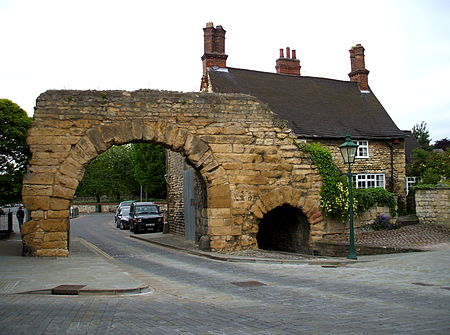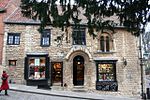Newport Arch
Arches and vaults in EnglandBuildings and structures completed in the 3rd centuryBuildings and structures in Lincoln, EnglandBuildings and structures in Roman BritainGates in England ... and 5 more
Grade I listed buildings in LincolnshireGrade I listed gatesHistory of Lincoln, EnglandRoman sites in LincolnshireRuins in Lincolnshire

Newport Arch is a 3rd-century Roman gate in the city of Lincoln, Lincolnshire. It is a Scheduled monument and Grade I listed building and is reputedly the oldest arch in the United Kingdom still used by traffic.
Excerpt from the Wikipedia article Newport Arch (License: CC BY-SA 3.0, Authors, Images).Newport Arch
Newport, Lincoln Ermine
Geographical coordinates (GPS) Address External links Nearby Places Show on map
Geographical coordinates (GPS)
| Latitude | Longitude |
|---|---|
| N 53.237202777778 ° | E -0.53816944444444 ° |
Address
Newport Arch
Newport
LN1 3DD Lincoln, Ermine
England, United Kingdom
Open on Google Maps










